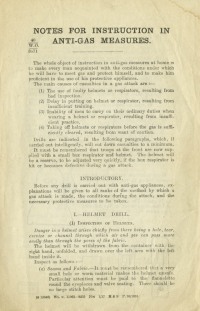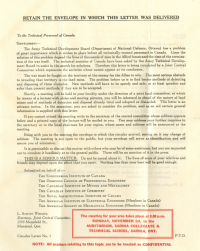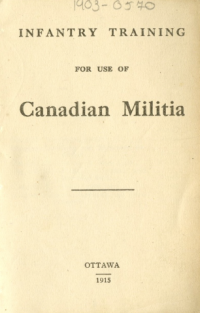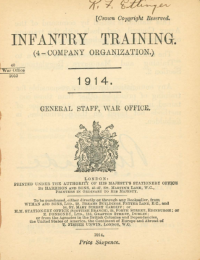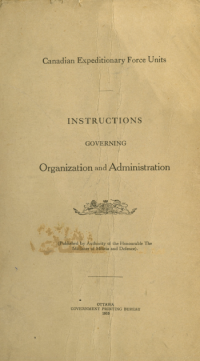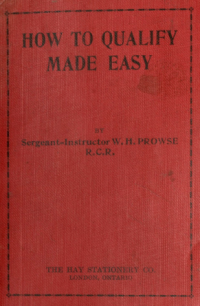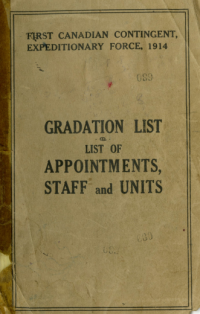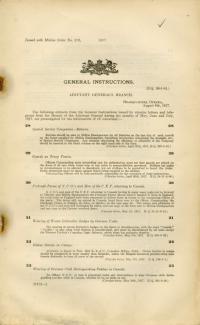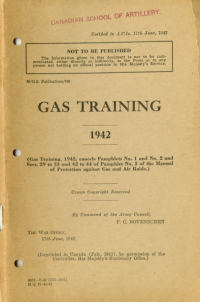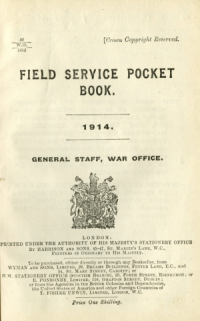Fighting
Anti-Gas Measures
Chemical weapons were first introduced to contemporary warfare during the Battle of Ypres in 1915. Since poisonous gas had never been deployed at such a large-scale, soldiers on the front lines were initially unprepared. Pamphlets such as this one offered soldiers instructions on how to use the respirator and helmet, as well as breathing exercises and disinfections methods.
Call for Technical Developments - Land Mines
This letter was sent by the Department of National Defence in 1943 in order to address the issue of land mines in enemy lands. This letter addressed various institutes with technically-trained professionals that the government believed could come up with a faster and safer method of removal.
The letter also stressed the urgency of this matter, stating that, "The lives of some of your relatives and friends may depend upon the effort that you exert."
Infantry Training for Use of Canadian Militia
This short booklet was issued for use by the Canadian Militia during the First World War. It includes information such as diagrams for aiming ammunition as well as company formations.
Infantry Training
A series of manuals such as this one was published by the British War Office in 1914. These manuals acted as guides for soldiers since they include crucial information about procedures, transportation and safety. This specific manual focuses on company organization and training systems.
Instructions Governing Organization and Administration
This booklet was published by the Minister of Militia and Defence for use by the Canadian Expeditionary Force. It clearly outlines the duties expected from various ranks, and also includes necessary procedures and instructions for soldiers and officers.
How to Qualify Made Easy
This book was published during the First World War as a resource for soldiers who wanted to pass the lieutenant examination. Like a textbook, the soldier could follow this guide in order to prepare for the exam and to see what kinds of questions would be asked.
Gradation List of Appointments, Staff, and Units
This book was issued by the First Canadian Contingent Expeditionary Force in 1914. It includes any changes to position, rank, or appointment. This would have been useful for soldiers in order to determine the correct superior to speak to for a given issue.
General Instructions 1917
Pamphlets like this one were issued by the Adjutant General's Branch, to be referenced by members of the Canadian Militia. The purpose of these pamphlets is to inform soldiers of essential instructions, procedures, and regulations.
Gas Training Manual
During the 20th-century, the way in which nations fought wars changed dramatically. One of the new tactics that made battle so much more dangerous was the use of chemical weapons, also known as gas. Manuals such as these attempted to prepare allied soldiers with the information needed to protect themselves and their fellow-soldiers.
Field Service Pocket Book 1914
This pocket book was issued by the War Office as a concise reference guide for soldiers on the front lines. It normally covers procedures and exercises that are crucial for active service. This specific copy was taped over with personal notes and sketches of attack tactics.

